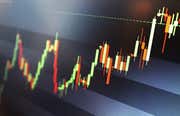Put simply, price action is a technique by which a trader reads the market and then makes a decision based on the actual price movement on the chart, as opposed to by relying on lagging indicators. Most indicators are, in fact, derived from prices on the chart, meaning that they are unnecessary and are reflective of past information.
Price action traders believe that trades should be made on the most important and up-to-date information, which they hold to be the current price and price history of a particular security. Through the use of particular strategies, these traders can utilize past information to learn about what prices are likely to do in the short term, which gives them a leg up when it comes to eking out short-term profits.
More technically, price action is the movement of a security’s price. This ation is encompassed in technical and chart pattern analysis in an effort to find order in what might otherwise appear to be a random price movement. Swings, tests of resistance, and consolidation are all examples of price action.
Price action traders
Price action traders tend to limit their data sources. They rely on technical analysis but not on conventional indicators. They instead use a combination of price movement, chart patterns, volume, and other raw data from the market to determine whether or not they will make a trade. To detractors, price action traders are simplistic or minimalist in approach, but the methodology is not in fact any easier than other trading strategies. Successful price action traders must still know a good deal about how markets work. One positive thing about price action trading is that it tends to work in any type of market, so it can be transferred to all types of investments.
At its purest, price action trading constitutes tape reading. Tape readers follow the time and sales window and depth of market (DOM). There is no other information needed; trades are taken on the basis of order flow.
Price history
Price action trading typically involves reading price history. They take this process beyond drawing basic support and resistance lines, choosing instead to look for the explanation as to what happened, why it happened, and whether it will happen again in the future.
Advantage to price action trading
Price action trading does not rely on extra software. It is free and can be accomplished simply by tracking price charts. It is versatile, making it effective in all kinds of markets. It can also be used with just about any trading software on the market. It also remains one of the fastest methodologies, because price lag is irrelevant, there is no old data.
Conclusion
Price action can be a difficult concept even for experienced traders. One reason for this is that no two traders will analyze past prices in the same way. It is, to some degree subjective. This means that price action traders must be independent and comfortable with their own understanding of the markets. Price action traders are also not likely to reap massive profits overnight, but they can stand to earn a tidy profit if they are skilled.
Price Traders
-
 Trading
TradingUse Price Action Trading Strategy for Results
Bored by the fixed rules of technical and fundamental analysis? Price action trading allows you to customize your own trading strategy. -
 Trading
TradingIntroduction to Stock Trader Types
What type of stock trader are you? -
 Investing
InvestingHow To Outperform The Market
Active trading is an investing style that aims to beat the market. Find out how it works, and whether it will work for you instead of buy-and-hold. -
 Trading
TradingInterpreting Overnight Action In The Index Futures
Overnight action in index futures sets the tone for the U.S. market day. Traders can use 24-hour index futures charts to predict action in the coming day.



